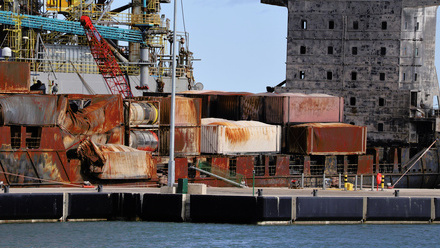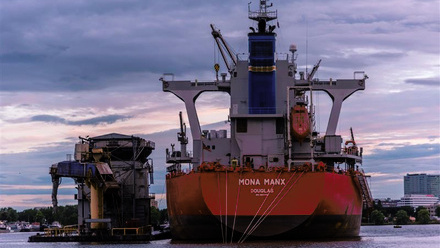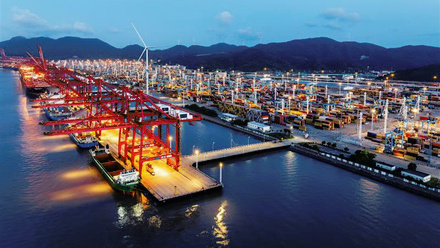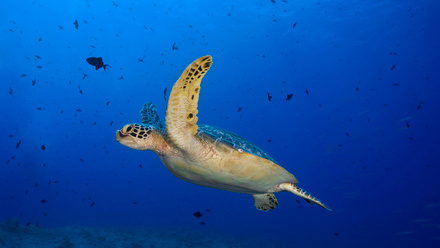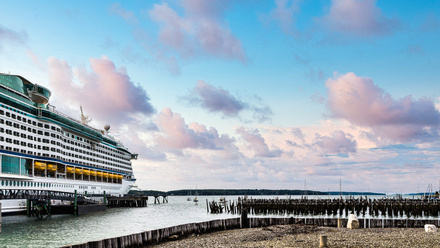UK study highlights how oceans can limit global warming
Five-year research project heading to South Africa, New Zealand, and the Antarctic to discover hidden carbon.
Research into ocean carbon storage undertaken by the University of Exeter, Blue Marine Foundation and Convex Insurance Ltd is being led by Professor Callum Roberts, Professor of Marine Conservation & Chief Scientist at the Convex Seascape Survey, and is now in its third year.
As global temperatures continue to rise – there is a 95% probability that 2024 will surpass 2023 as the warmest on record according to analysis by Carbon Brief – the ocean is the largest carbon sink in existence, generating 50 percent of our oxygen and absorbing 40 percent of the carbon emitted by burning fossil fuels.
However, it is not just the carbon dioxide (CO2) absorbed by the ocean as part of the carbon cycle that interests scientists and researchers, but also what is contained in the earth’s continental shelves and the sea creatures burrowed within them; the shelves make up around eight percent of the entire area covered by oceans and is 38 times larger than marine vegetated ecosystems.
This particular ongoing investigation, the Convex Seascape Survey, is vital as it will generate open-source data for others to use while simultaneously opening up innovation to help the ocean regulate and slow atmospheric temperate rises. Indeed: “Studies have shown that ocean-based mitigation could provide up to a fifth of the solution needed to limit global warming to 1.5 degrees Celsius and narrow the emissions gap,” according to the Convex Seascape Survey.
Discoveries so far
In the three years since beginning, the Convex Seascape Survey has made plenty of progress, including the study of bioturbation rates (how quickly invertebrates that live on the seafloor mix sediment) of 18 different benthic species from fieldwork in Millport, Scotland, data modelling on carbon accumulation and why regions such as New Zealand, South Africa, and the Antarctic are of interest.
“The fieldwork in Millport, Scotland, or ‘The Great British Bioturbation-athon’ as we called it, was the first piece of fieldwork conducted for the Convex Seascape Survey in spring 2023,” explains Professor Roberts. “The research revealed that different types of creatures such as worms, clams, brittle stars, and feather duster worms all play a remarkably similar role in burrowing the carbon down into the seabed. These findings provide an unprecedented new detail on the potential for such animals to store carbon, meaning reduced levels of carbon in the atmosphere which is better for the planet.
“Another discovery made by our data modellers, who have reconstructed how ocean currents have changed since the end of the last ice age, [is] to predict areas of [the] greatest carbon accumulation,” Professor Roberts continues. “This resulted in a first-of-its-kind tool called PALTIDE, which enables users to interrogate ocean conditions for any given moment or location in continental shelf history over the last 20,000 years.
“In a second modelling study, animated plots have been produced which depict the air-sea carbon dioxide flux for four important continental shelves, highlighting which regions act as the strongest sinks for atmospheric carbon emissions.”
Professor Roberts is equally excited about the final two years of the project, as research across major ocean biomes from the tropics to the poles is planned.
“Upcoming locations in the next six months include South Africa, New Zealand, and the Antarctic,” enthuse Professor Roberts. “In Antarctica, we will be taking seabed cores to interpret how abundant great whales may have boosted carbon accumulation before industrial whaling. In South Africa and New Zealand, we want to study how marine life and carbon accumulation change across gradients of seabed disturbance, from protected to highly disturbed by human activities like trawling and dredging.
“Finding good sites is not easy, however, because soft-bottom ecosystems have, until now, been low priorities for protection. One of our aims in the survey is to transform how people value the seabed. It isn’t just mud; it’s rich, beautiful, very much alive and critically important to the way the ocean works,” he concludes.
Read more: Deep ocean faults may act as major carbon dioxide storage sites
Image: Cape Town, South Africa; credit: Shutterstock.
Tell us what you think about this article by joining the discussion on IMarEST Connect.

